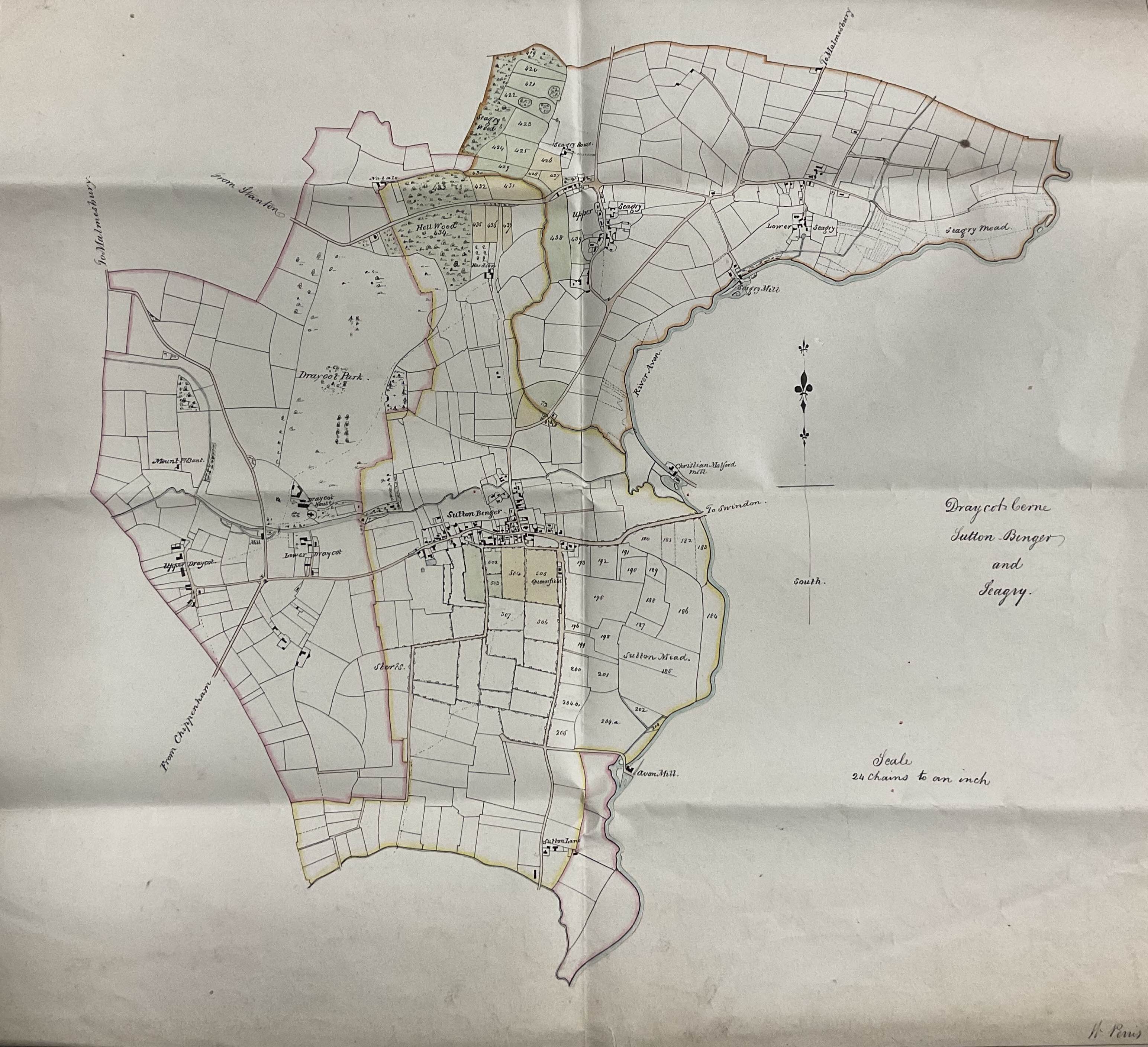The 1500s and 1600s
Page last updated: 6 February 2024, 12:05pmA Short History of Sutton Benger; Part Four
It’s in the 1500s and 1600s that we start to get a sense of what Sutton Benger and Draycot Cerne were like, with more documentary evidence giving us more details about the villagers, their names and trades. The biggest impact on the parish was Henry VIII’s break with Rome in 1538, which resulted in the period known as the Dissolution of the Monasteries. The Manor of Sutton Benger was taken away from Malmesbury Abbey and was sold in 1575, with the money going to the King. It was eventually bought by Sir Robert Long of Draycot Cerne. From that date until 1920 both parishes of Sutton Benger and Draycot Cerne were part of a single Manor of Draycot.
The process of Enclosure slowly changed the landscape, with parts of Draycot Park being enclosed in the early 1500s, through the 1600s; however, the majority of Sutton Benger parish (except parts of the meadows along the River Avon) was not fully enclosed until 1729, when many of the field patterns that we can see today were created.

While the majority of villagers remained quite poor, some were beginning to rise up from being simple tenants working the land; one can identify a basic class structure that included husbandman, yeoman and farmer. People were beginning to become more literate and, because they now had possessions to leave to their families, they began to write Last Wills and Testaments. The earliest example we can find from Sutton Benger is that of John Boxe, a husbandman, dated 6 December 1570. His bequests to his children included a field of barley to his son John, and an ox to one of his daughters; another ox was to be divided equally among three other children. His widow Alice also wrote a Will, dated 1 April 1571. Bequests to her children and grandchildren included a bed, sheets and candlesticks, and several bullocks.
Churches were supposed to maintain parish registers of births (or baptisms), marriages and deaths (or burials) from 1538, but the earliest surviving records that we have for Sutton Benger are from the early 1600s. The third baptism, dated 26 August 1605, was of Margery, the daughter of John Box. This was very possibly the son of John Boxe who was bequeathed a field of barley in 1570. There are continuous references to families called Box throughout the 1600s and 1700s, and they gave their name to the cottages which stand at the western end of the High Street.
Archives and Facts
Discover more articles in the history index.
History Index